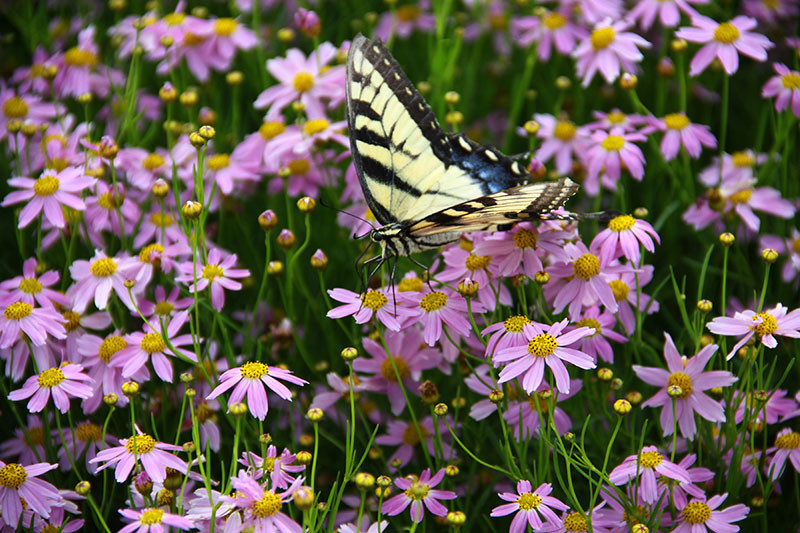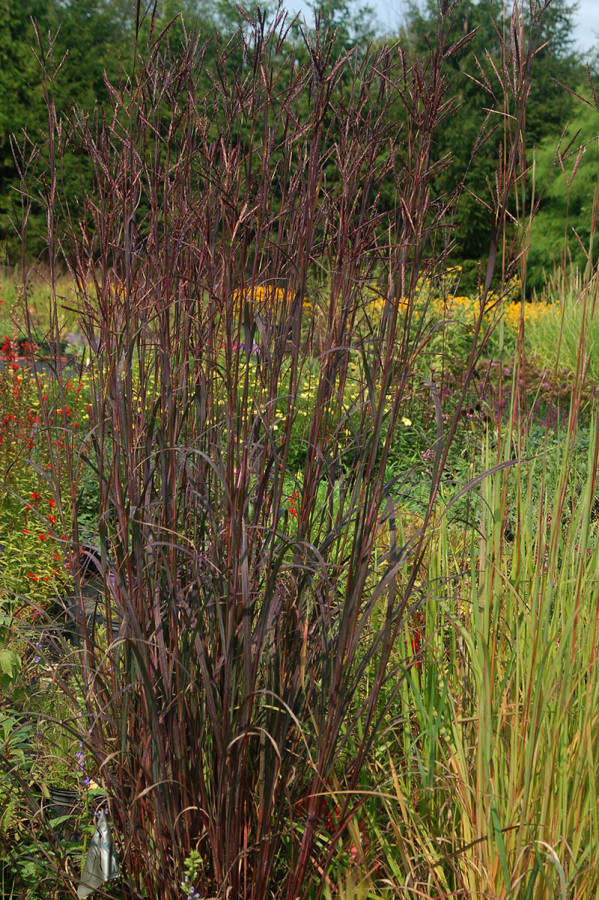
Natives: Kudos, Combos and Caveats
American gardeners are in a sweet, mad-about-you honeymoon phase with native plants, and for good reasons. Natives have been rising in popularity for two decades, and are perfectly positioned to rise even higher on the updraft of a perfect storm of confluent influences.
Government entities spec native perennials, like rudbeckia and echinacea, and native grasses, like Carex pensylvanica, for big sweeps in highway berms and medians. Homeowners, newly sympathetic to the plight of the bumblebee, the blight of the honeybee and the flight of the butterfly, are more apt to add pollinator-friendly plants, including natives like asclepias, to their gardens. Finally, there’s a growing awareness that North American natives are just great plants — something Europeans have known since Colonial times.
KUDOS
Some purists decry them, but the industry and U.S. gardeners have enthusiastically embraced “nativars,” i.e., NATIve cultiVARS — selections and hybrids of native plants. For more than a century, breeders have tinkered with New World species of aster (now symphiotrichum, a widely ignored nomenclature update), phlox, coreopsis, echinacea, heuchera, rudbeckia, stokesia and more, bringing us spectacular, garden-worthy improvements in form, flower color, habit and disease resistance.
This sort of work has more recently focused on native grasses, resulting in terrific choices in andropogon, muhlenbergia, panicum and schizachyrium.
COMBOS
I’ve praised schizachyrium ‘Standing Ovation’ before for its staunch, upright garden habit. True to its name, it stays erect in the landscape when other little bluestems look as if deer have bedded down in them. It’s just as attractive in pots. As the centerpiece “thriller” in a mixed container, its perfect posture and multicolored cylindrical stems pulled people into our booth at recent trade shows.
Other pot-and-combo-friendly native grasses:
Muhlenbergia: Tenderness (Zone 7) and late bloom are barriers to sale in the North, but a new variety, ‘Fast Forward’ flowers weeks earlier than the species. Best in masses, with clouds of pink/purple dazzling seed heads.
Nassella tenuissima: Hardy to Zone 6, Mexican feather grass is in constant motion in the slightest breeze.
Isolepis cernua: Fiber optic grass really could be called “native to the planet” (see “Caveats” below). Hardy to Zone 7, it’s a natural for containers. A rush, not a true grass.
Juncus effusus ‘Big Twister’: Also not a true grass, “corkscrew rush” can handle a wide range of moisture levels and is hardy to Zone 5.
CAVEATS
It bears mentioning — again — that “native” is a buzzword whose definition differs according to one’s beliefs. If a plant grows somewhere in North America, is it “native” anywhere on the continent? Purists say a plant moved more than a few miles from its pre-Columbian provenance is not native to its new digs.
There’s merit to that stance: After all, Mexico is part of North America, but few would label Euphorbia pulcherimma — poinsettia — as native in the U.S. By that reasoning, one of my favorite natives, Lewisia (finicky in the rock garden but great on the windowsill) should not be so labeled east of the Mississippi. But most nurseries that sell it do so, and most growers and gardeners are OK with that. The generally accepted definition of “native” is pretty relaxed.
I like Jelitto Perennial Seed’s approach: “Native to the planet.” It makes sense for this German-based company that sources and markets seed globally. Jelitto’s Allen Bush, among the most perennial-savvy people I know, loves his “cheater prairie” of North American natives. It’s thriving in central Kentucky with utter disdain for the fact that historically and prehistorically, there apparently were no prairies there.
Despite their myriad virtues, natives are no panacea. No matter how well-acclimated a category of plants may be, there’s no set-it-and-forget-it, zero-maintenance garden. Natives are touted as responsible, “correct” replacements for
non-natives that might naturalize, like hemerocallis or lythrum, but they can also become problematic. Just ask the U.S. Department of Agriculture (USDA).
Here’s a warning from the USDA’s website: “This plant may become weedy or invasive in some regions or habitats and may displace desirable vegetation if not properly managed.” That’s from the plant profiles of two popular native grasses: Andropogon gerardii (big bluestem) and Panicum virgatum (switchgrass). Often recommended in place of non-native (but much more impressive) miscanthus, they have some baggage of their own. But they’re tough, reliable grasses, much in demand, and it behooves wholesalers and retailers to include them in their portfolios.
Among recent introductions, the most striking are andropogon ‘Blackhawks’ and ‘Dancing Wind’, and panicum ‘Hot Rod’
PP26074, an Emerald Coast Growers’ intro. An older form, panicum ‘Northwind’ was the Perennial Plant of the Year in 2014.
USDA appends no caveat to Schizachyrium scoparium, a.k.a. little bluestem. Also tough and reliable, it’s of a size more suitable to most gardens. Among many available varieties, ‘Blaze’ and ‘Prairie Blues’ are stalwarts, and the best newcomer is the aforementioned ‘Standing Ovation’.
Another word of caution: Native plants and pollinators are not always lovely. Those brilliant butterflies and pastel moths are the “flying flowers” that enliven the garden, but remember: The heart-lifting flying part of a pollinator’s life is just one stage among many. The others ain’t so pretty, and neither is their effect in the garden.
The orange blooms of Asclepias tuberosa are gorgeous, especially when adorned by Monarch butterflies. But the plant is decidedly less fun to have around when it’s being devoured by Monarch larvae, and you can’t have butterflies without caterpillars.
The law of unintended consequences also dictates that some plants will spread beyond the gardener’s rose-colored vision. Another asclepias, A. syriaca, is
a cautionary example. New Moon Nursery in New Jersey, specializing in eastern U.S. natives, describes it thus: “Monarchs love it, farmers curse it, you decide.”
Whatever you decide, you can’t afford not to have natives in your lineup for 2016 and beyond. Fortunately, it’s getting easier, with branded programs like American Beauties and Native Wonders.
Some zealots would have us plant nothing else, but as Dale Hendricks of Green Light Plants, a quirky nursery growing mostly native ephemerals, says, “I grow natives to expand the available plant palette — not restrict it.”




 Video Library
Video Library 




















